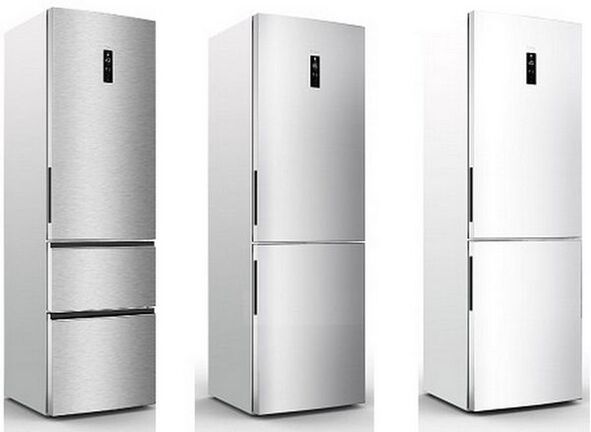New generation home appliances can help significantly reduce electricity consumption at home. Of course, it is unthinkable to immediately replace all existing appliances with energy-saving ones, but even the gradual replacement of obsolete or outdated equipment can help improve energy consumption settings at home.
Energy saving devices
Refrigerators

The first energy-saving devices we looked at can save a lot of money by reducing energy consumption at home. After all, these devices work around the clock, so it is better to choose them carefully. These are refrigerators. Technological innovations of almost all manufacturers are inverter motors. They are very quiet and allow you to adjust the power consumption of the device, avoiding peaks in consumption. By keeping the temperature stable and even, it was possible to optimize energy consumption and increase the efficiency of refrigerators.
Several manufacturers have developed a technology that allows you to store food better by differentiating ventilation in different compartments. In modern models, the release of active oxygen prevents the formation of bacteria. Energy-efficient refrigerators manufactured by the South Korean company, in turn, use insulation panels more efficiently. They are thinner than the materials used only a few years ago. This means that modern refrigerators have become more energy efficient. More space to eat, but less energy consumption to cool it. Recently, American researchers ranked refrigerators in the leading positions in the ranking of energy efficiency. These energy-saving devices use the same energy as a 20-watt lamp. This result is achieved thanks to effective insulation, gaskets, new variable speed compressors and again the shape and position of the evaporator and condenser.
The results of other studies in the United States may convince even the most indecisive people to change the refrigerator. In 12 years after purchasing a new model, the reduction in energy costs compared to the old device can be several hundred dollars. The most energy-efficient models are those with a freezer on top of the refrigerator. At the same time, side-by-side refrigerators have the worst indicators of energy efficiency.
Dishwashers
From a technological point of view, modern dishwashers use not only less energy, but also less water, and adjustable baskets allow you to optimize loads. German manufacturers also use the properties of natural zeolite - it absorbs moisture during washing and releases it as steam during drying, making the final stage of the cycle faster and more efficient.
Washing machines
Modern washing machines provide different wash cycles to reduce water and detergent consumption. Extensive research has shown that the cleaning process does not depend on the water temperature and the detergent used, but is the result of the mechanical action of the drum. In this regard, new solutions have emerged, for example, washing machines developed by the company include air bubbles in the drum, which allows the detergent to better penetrate the fabric and even wash well in cold water.
Induction furnaces
Induction hobs are becoming increasingly popular, even among the lines of energy-saving devices. They only cook by creating an electromagnetic field that heats the bottom of the pot. As a result, there is no energy loss. Considering that the efficiency of these devices reaches 95%, you save money, while ordinary gas stoves leak 30-60%.
Vacuum cleaners
How to turn watts into a useful vacuum cleaner? If the vacuum system is not efficient, not much. The only thing you can tell by looking at the watts on the energy label is energy absorption. But what if all this energy is used inefficiently? New energy-saving devices guarantee good. The advantage of cyclone technology vacuum cleaner models is the absence of a dust bag. The suction power remains unchanged, which benefits the energy efficiency of the device.
Energy efficiency label
Once you are sure that the equipment can help you save energy at home, it remains only to choose the right model. There are many suggestions and navigation is not so easy. The first thing to do is pay attention to the energy efficiency label, which gives a clear idea of energy consumption.
The horizontal axes above indicate the energy efficiency class, which can vary between A +++ (best) and G (worst). The color of the arrows also indicates the degree of energy efficiency of the equipment: from red for high energy consumption classes to dark green for the most energy-saving devices. The arrows show the energy consumption in kW / h per year on the basis of laboratory tests, ie under optimal conditions. By knowing the cost of electricity, you can easily determine the annual cost of electricity, which depends on the mode of use of the device.
























